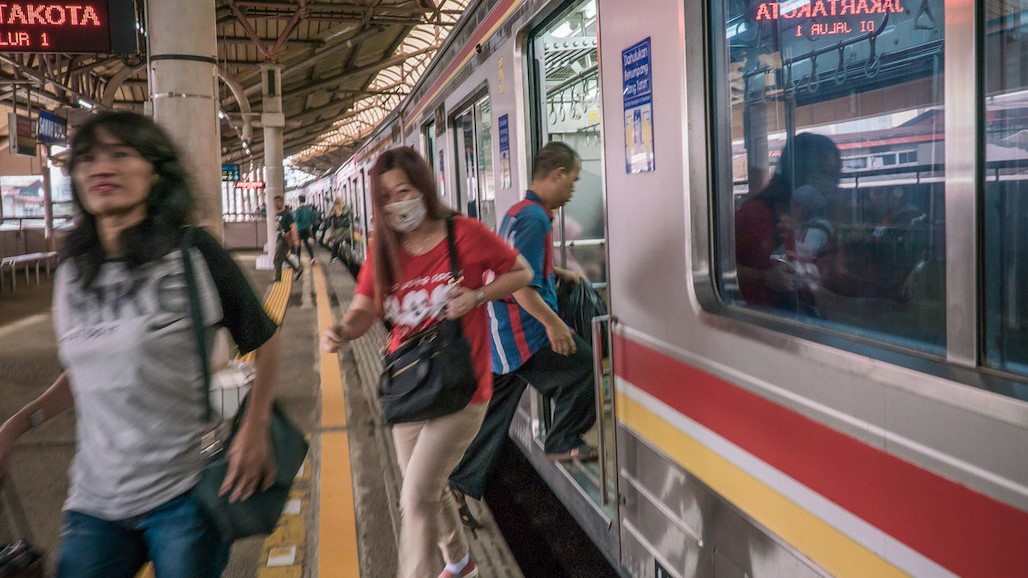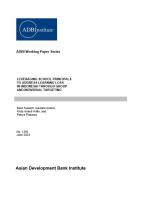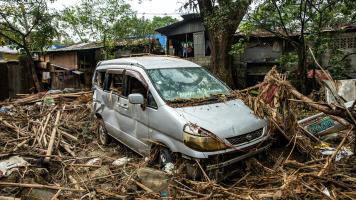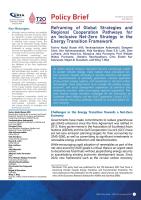
With 65% of Asia’s infrastructure projects not considered bankable and with the clock ticking to deliver on their net-zero goals, countries like Indonesia are under pressure to line up green projects that would attract investments from the private sector. Photo credit: ADB.
Incorporating environmental, social, and governance norms in planning and offering incentives for fund raising, among ways to add more green projects.
Indonesia would need a pipeline of green infrastructure projects if it were to meet its goal of reaching net zero by 2060.
With 65% of Asia’s infrastructure projects not considered bankable and with the clock ticking to deliver on their net-zero goals, countries like Indonesia are under pressure to line up green projects that would attract investments from the private sector.
Designing bankable projects though requires significant upfront cost and time on project preparation to get the projects to a stage which would make them attractive to investors.
A new report from Climate Bonds Initiative, an investor-focused not-for-profit that promotes large-scale investment in the low-carbon economy, said greening Indonesia’s infrastructure pipeline could be accelerated by key policy and institutional changes. It proposed six measures:
1. Incorporate climate risk exposure and environmental, social, and governance (ESG) criteria into new infrastructure plans, including during public–private project preparation.
This also entails taking into account future depreciation of assets due to change in precipitation patterns, temperature increases, and extreme weather events in project design.
The report noted there is strong global green finance momentum. At the 2021 United Nations Climate Change Conference, the Glasgow Financial Alliance for Net Zero, a coalition of financial institutions supporting UN’s climate targets, committed more than $130 trillion in private capital to transition the global economy to net zero.
The number of commitments and allocation of capital to green assets are also increasing. The number of global funds linked to ESG has doubled from 2019 to 2020. Between 2013 and 2017, the total capital allocated toward green assets by large pension funds rose to 7.5% from 2.6%. These increases were seen across asset classes, such as green bonds, green equity indexes, and other green assets.
2. Introduce financial incentives for green, social, and sustainability bond issuers.
This could mean offering incentives, such as exempting the pre- or post-issuance cost for issuing a green bond, waiving the verification and external reviewer fee, or reducing or exempting the listing fee altogether.
Globally, green bond and loan issuances rose to $269.5 billion in 2020 from $171 billion in 2018. And in ASEAN, issuances rose to $29.4 billion in 2020 from $5 billion in 2018 due to strong interest from both investors and issuers.
Indonesia is among the most active in the region in green bond issuance. As of November 2021, its green, social, and sustainability bond market stood at $7.7 billion, with green bonds contributing $6.3 billion to the total.
However, nascent green bond markets like Indonesia lacks local expertise when it comes to independent reviews, assessments, and reporting needed for issuances. Green issuances typically need to be reviewed by independent parties to ensure transparency. As of end-2021, issuers still rely on international organizations and Sustainable Development Goals (SDG) centers in local universities to support their pre- and post-issuance processes. This makes green bond issuance complicated and could raise costs for local and new issuers.
Setting up grant schemes, like the one launched by the Monetary Authority of Singapore in 2020, which covers the cost of engaging independent service providers to validate the green and sustainability credentials of the loans, can encourage bond issuers to enter the market, the report said.
3. Promote COVID-19 recovery bond programs to support a green recovery.
The issuance of green, resilience, or blue bonds can support a more sustainable recovery. Indonesia’s $750-million sovereign green tranches from 2020 and 2021 are examples of COVID-19 recovery bonds and can be replicated in the future.
The 2020 green issuance was part of the $2.5-billion sukuk—financial certificates or investments that comply with Islamic laws and ethical principles—issued to finance the country’s pandemic response. The following year, Indonesia issued $3 billion worth of sukuk, which included a 30-year $750-million green tranche, the longest green sukuk to date. The green issuances were oversubscribed by 7.73 times, with proceeds allocated to finance and refinance green projects.
Such issuances though should exclude activities that are at risk from future shocks or assets that can become stranded because of climate policy changes, or which are not resilient to physical climate risks, the report said.
For instance, fossil fuel projects should be excluded as decarbonizing energy is critical to Indonesia meeting its climate ambitions. Energy is the country’s second largest source of emissions, accounting for 39% of the total. Fossil fuels—especially thermal coal plants—account for 74.4% of of the country's energy mix as of 2020. Transitioning away from fossil fuels will, thus, minimize the risk of locking future emissions and exposure to stranded assets, especially for coal plants.
4. Promote blended finance and de-risking, credit enhancement, or guarantee mechanisms for green transactions.
To improve the bankability of an infrastructure project, use blended finance and de-risking mechanisms, as well as credit enhancement measures and guarantees as they address project risks that prevent issuers from accessing private capital through green bonds, the report advised.
Addressing such barriers and risks will be important for Indonesia to increase the market scale of issuances, the report said, noting multilateral development institutions can step in to lower risks through de-risking and other project-facilitating instruments, like guarantees or technical assistance for project preparation.
The ASEAN Catalytic Green Finance Facility (ACGF) is an example of a mechanism that tries to leverage public capital to mobilize private resources, including through regional financing vehicles. The facility supports a sustainable recovery by helping countries develop bankable green and blue projects. Owned by ASEAN countries and managed by the Asian Development Bank, ACGF facilitates access to $2 billion from development partners and helps de-risk and improve the bankability of green projects and attract private investment.
5. Encourage state-owned enterprises to issue green bonds to finance green infrastructure projects.
Funds raised by the state firms can complement state-budget financing for key infrastructure projects, the report said. The Makassar–Parepare railway—which is funded partially by a sukuk—is an example of this. The $574-million project secured a senior term syndicated loan of $48 million to partly fund construction.
In the future, state firms could consider a similar financing scheme where green sukuks are issued. Already, state-owned firms have announced such green capital raising. The state-owned Indonesia State Electricity Utility Company (PLN) and oil and gas company Pertamina both announced that they will issue green bonds in 2022, adding to the country’s growing number of green and sustainability bonds issued since 2018.
6. Promote municipal green bonds.
While municipal governments are potential issuers of green bonds, complex regulatory challenges and bureaucratic requirements have prevented them from entering the market. Adjusting regulatory requirements—such as lowering the debt service coverage ratio or streamlining the approval process—would encourage municipal governments to issue green bonds.
Granting incentives, such as credit enhancement for local governments or establishing green municipal finance for local governments to aggregate debt requirements and access lower costs of capital, should also be considered.
This article was first published by BIMP-EAGA on 13 April 2022.

BIMP-EAGA
The Brunei Darussalam–Indonesia–Malaysia–Philippines East ASEAN Growth Area, or BIMP-EAGA, is a cooperation initiative established in 1994 to spur development in remote and less developed areas in the four participating Southeast Asian countries.


